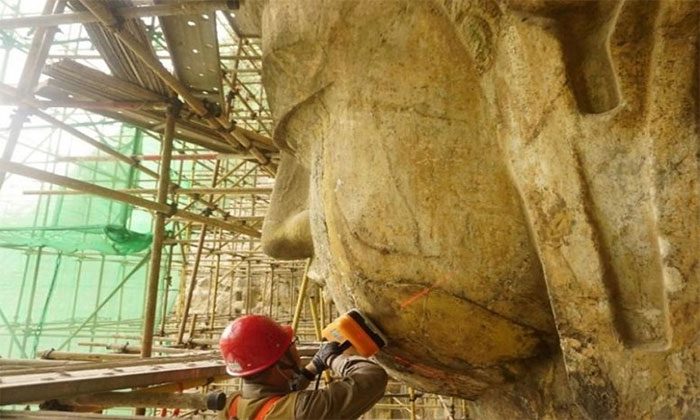Archaeologists have discovered that the colossal statue of the Buddha in the Longmen Grottoes in Henan may have once been gilded, silver-plated, and adorned with colored glass.

Colossal statue of the Buddha in the Longmen Grottoes.
A team of archaeologists made several new discoveries during the restoration and preservation project of the Phong Tien Cave in the Longmen Grottoes in December 2021, according to the Longmen Grottoes Research Institute. Utilizing advanced technologies, they found traces of gold and silver on the surface of the Buddha statue, a massive sculpture built during the Tang Dynasty (618 – 907 AD). “This indicates that techniques such as gilding may have been used in the construction of the Buddha statue,” said Shi Jiazhen, the director of the institute.
On the surface of the statue’s body, the archaeological team also discovered traces of green, red, black, and other colored paints, revealing that the statue may have been “dressed in brilliant attire” at that time. Additionally, they found a glass and lead eyeball on the bodhisattva statue located to the right of the Buddha statue. The eyeball is arc-shaped and approximately 0.5 cm thick.
“This type of glass turns dark blue after cleaning. It is a very rare material from the Tang Dynasty,” shared Ma Chaolong, a staff member at the institute. “This new discovery is of great significance for studying the decorative characteristics, craftsmanship, and preservation of the statue in the Phong Tien Cave,” Shi remarked.
The Longmen Grottoes in Henan Province. (Video: Xinhua)





















































